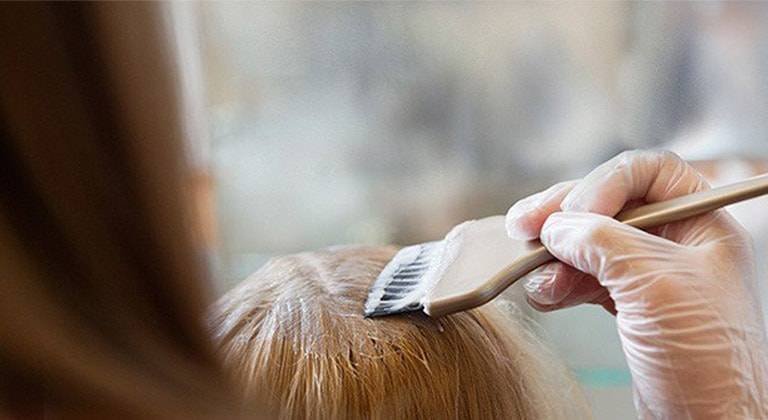How To Get The Best Grey Coverage
Need a grey root cover up or just wondering how to get the best grey coverage? Wonder no more, Garnier have all the answers right here. Click now.
Interested in knowing what your favourite shade will look like on you? Don’t forget to use our Virtual Try-On feature to see what shade best suits you. Find out more on our Virtual Try-On homepage by clicking here or at the end of this article. You can also use our Virtual Try-On tool by clicking on one of our products with the 'Try It On' icon.
Let's face it, not many people choose to be grey; the connotations associated with ageing – and the presumption that ageing is a bad thing – are so deeply embedded in our culture that only the brave, the young and the very beautiful will attempt a full-on grey makeover; Cara Delevingne, take a bow.
Most of us, not having Cara's bone structure, cover it up; we find a hair colour and hide the evidence. It sounds simple and, thanks to Garnier, it is. But there are ways of doing it, and a few simple rules to observe in order to achieve the best results.
What's the best way to cover my grey hair?
The way to get the best grey coverage with a strong grey root cover up, in short, is to use top quality hair colour. We recommend permanent colour for best grey coverage, simply because it lasts longer; you don't want to be re-dyeing every few washes. Whether you want to try Belle, Nutrisse or Olia, all three have up to 100% grey coverage!
The next question is, which shade? This is where it gets a little more complicated and more personal; you might want to stick with what nature gave you, the colour that has served you well for decades. Or, you may want a more dramatic change? The arrival of grey hair – it's an emotional experience for many of us – may prompt you to do something radical, to change colour entirely. Don't knock it until you've tried it, we say, but let's take emotion out of it for a while and think about colouring with our sober, professional heads on.
Make grey a feature
Here's a thought for starters: Perhaps you don't actually need to hide all those grey hairs. Due to its different texture and lack of colour, grey hair – which is technically white by the way – can become an alluring feature. Think of actresses like Helen Mirren and Judi Dench who have turned natural greying hair to their advantage. If you are canny about it and add the right colouring to your existing grey, your hair will act as highlights, giving you a completely different style, but one that looks very natural. Grey can be the way; it's certainly very much on trend. Just bear in mind that to get the most natural highlights you'll need to stick quite close to the colour you have already.
The complete root covers up
Of course, drawing attention to any grey hair is an anathema to many people. The most common reaction, and a perfectly understandable one, is to want to make it go away. Sadly, not even Garnier can do the latter – we're not magicians – but we can help you cover the grey and keep those tell-tale grey roots secret.
Go ahead and pick a colour
Before you plunge into the colour chart or think about your natural colouring. For a natural look, and a flattering one, it's essential the tone of your complexion and your hair colour complement each other. It's also important to consider the colour of your eyes and even the colour of the clothes you tend to wear. Hair colour is the single most significant distinguishing feature, so take all the time you need to get it right.
How do you match skin tone?
Skin tone is essentially the warmth of your skin; some people have a pale complexion that is naturally cool with underlying shades of blue or even yellow, others have much warmer undertones of pink or caramel within a darker complexion that tans easily. Everyone is different; the key is not to fight nature (blend in, don't clash). Go with the flow, rather than trying to swim against the current.
Take, for example, blondes; natural blondes with a light complexion of warm tones should opt for a honey blonde color(#), while those with cooler tones are better suited to icy-blond shades with bluey undertones. The great news, if you're blonde, is that your greys are relatively easy to cover up, even with home hair dyes, as white (grey) and blonde are pretty close to each other on the colour spectrum; a little colour goes a long way.
If you are a brunette, it stands to reason that you are best off covering up your grey hair with a brown colour. Most professional colourists would urge you to consider a medium-light brown, even if you are naturally very dark, as this will more successfully cover your greys and will match your naturally paling skin too.
Facing up to paler skin
The truth is, you can cover up grey hair with any colour, but if you want it to look natural you need to take your age into consideration, quite simply because your skin is ageing too. It's not like your complexion suddenly loses all vibrancy at 50; ageing is gradual. The point is simply that, as your complexion becomes paler over time, a dark hair colour can look too harsh and age you further. Whereas something with hints of chocolate, or perhaps light balayage highlights, will keep your face illuminated and youthful looking.






